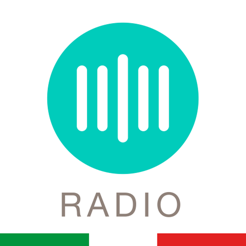Content
If the stock falls to $133 or lower, the limit order would be triggered and the order would be executed https://www.bigshotrading.info/ at $133 or below. If the stock fails to fall to $133 or below, no execution would occur.
- Another drawback, especially with an order that can execute up to three months in the future, is that the stock may move dramatically.
- Depending on the final price your order is filled at, the final dollar amount of your order may change from what is estimated in the app.
- Company About Discover how we’re making the markets work for all investors.
- Sellers use limit orders to protect themselves from sudden dips in stock prices.
- In order to monitor your positions for any changes within the market, you can also set up push notifications for desktop and mobile for all order types on our platform.
With a sell limit order, a stock is sold at your limit price or higher. Your limit price should be the minimum price you want to receive per share. MEOW is currently trading at $10 per share, but you only want to pay $8 per share at most. With a buy limit order, a stock is purchased at your limit price or lower. Your limit price should be the maximum price you want to pay per share. NerdWallet strives to keep its information accurate and up to date. This information may be different than what you see when you visit a financial institution, service provider or specific product’s site.
Pros and Cons of Using Limit Orders
If you had been paying attention to the market and reading news reports, you could’ve canceled your order before it executed, and placed a new order with a higher limit. When managing your stock market trades, many techniques and methods exist to help you make a profit or reduce loss. Investors use limit orders when they are concerned that a stock’s price might suddenly change by a significant amount or when they are not overly interested in executing a trade right away. The total price paid might be considered more important than the speed of trade execution. Some investors use limit orders based on the belief that a stock’s price will reach a more desirable level in the future.
A trade may not execute if the market doesn’t align with your limit buy or sell price. For example, suppose you want to sell 10 shares of TUVWXYZ Corporation, priced at $15 per share. However, you believe the price will rise to $18 per share within the next month. You then can open a sell limit what is limit order order for 10 shares at $16 lasting one month. As a result, your shares won’t be sold until the price reaches $16 per share. If the price doesn’t reach that level before the order expires, your shares won’t be sold. Let’s say you want to buy Disney , which is currently trading at $105 per share.
Why the difference between ask and bid matters for limit orders
Limit Order versus Stop Order comparison chart Limit OrderStop OrderInstruction Trade at a price equal to or better than a certain price. Intent Investors use limit orders to lock in the price they want because limit orders are guaranteed to execute at a particular price or better. If a stock’s price is moving in a direction opposite of what the investor would like, a stop order places a ceiling on potential losses. Brokerage services for alternative assets available on Public are offered by Dalmore Group, LLC (“Dalmore”), member of FINRA & SIPC. “Alternative assets,” as the term is used at Public, are equity securities that have been issued pursuant to Regulation A of the Securities Act of (“Regulation A”). These investments are speculative, involve substantial risks , and are not FDIC or SIPC insured. Alternative Assets purchased on the Public platform are not held in an Open to the Public Investing brokerage account and are self-custodied by the purchaser.
- Using a stop-limit order enables you to continue to hold a stock you believe will regain its worth.
- In other words, your stock won’t be sold for any less than $33.45 per share.
- If the stock price for FHS falls to $20 or below, your order will then be triggered.
- When you place a limit order, you are telling a broker to buy or sell shares of stock when and only when the price is right.
- Third, an investor may choose to set a limit order if they are buying or selling at the end of the market day or after the stock market has closed.
Charts, screenshots, company stock symbols and examples contained in this module are for illustrative purposes only. If you are an institution, click below to learn more about our offerings for RIAs, Hedge Funds, Compliance Officers and more. If MEOW drops from $10 to $8 or lower, and there are shares available, your order should fill at $8 or lower. Depending on the final price your order is filled at, the final dollar amount of your order may change from what is estimated in the app. Many or all of the products featured here are from our partners who compensate us.
Mutual Funds and Mutual Fund Investing – Fidelity Investments
This might also be a good choice for longer-term trades, since in some cases traders can place a limit order with no expiration date. Your limit order to buy XYZ at $33.45 per share won’t be filled above that price, but it can be filled below that price—and that’s good for you. If the stock’s price falls below your set limit before the order is filled, you could benefit and pay less than $33.45 per share. On the other hand, if the price goes up, and your limit price isn’t reached, the transaction won’t execute, and the cash for the purchase will remain in your account. For example, let’s say you buy a stock for $100 and want to limit your downside risk to around 10%.





